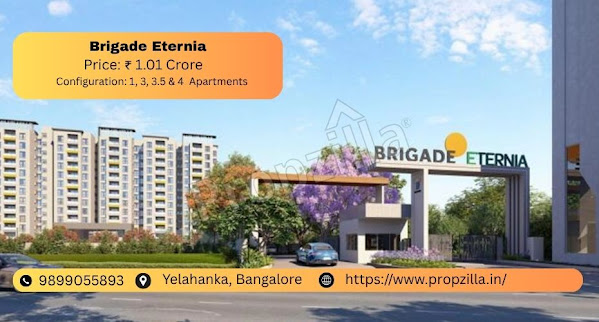Declining Real Estate: MMR Sees 17% Fall in Sales, Pune Launches Slacken 5%
The Indian real estate sector has been on a strong growth trajectory over the past few years, particularly in metropolitan hubs like the Mumbai Metropolitan Region (MMR) and Pune. However, recent data indicates a slowdown that is beginning to worry both investors and developers. According to the latest industry reports, housing sales in MMR have declined by 17% year-on-year, while new project launches in Pune have dropped by 5%.
This dip is significant because these two markets have historically been the pillars of residential real estate demand in western India. Understanding the causes, implications, and possible future trends is essential for buyers, investors, and stakeholders.
The Numbers Behind the Decline
-
MMR Sales: The Mumbai Metropolitan Region, comprising Mumbai city, Thane, Navi Mumbai, and nearby suburbs, reported a 17% decline in housing sales. This suggests a cautious approach among homebuyers despite strong economic growth and rising incomes.
-
Pune Launches: Pune, often regarded as one of the most stable residential markets, has seen a 5% fall in new launches. While less severe than MMR’s sales dip, this reflects developer restraint in adding fresh supply amid uncertain demand conditions.
-
Nationwide Trends: On a broader scale, India’s top real estate markets continue to display resilience, but Maharashtra’s slowdown highlights the fact that affordability, rising interest rates, and market saturation are now pressing concerns.
Key Reasons for the Slowdown
1. High Property Prices in MMR
MMR is India’s costliest housing market, with average prices far higher than most other metros. Continuous price appreciation has stretched affordability for middle-income and even upper-middle-income groups, discouraging end-users. The demand for Luxury Apartments in Mumbai continues to stay robust, but the mid-segment is bearing the brunt of this slowdown.
2. Rising Home Loan Rates
Although the Reserve Bank of India has maintained interest rates steady recently, home loan EMIs remain high compared to the pre-2022 period. This has dented demand from first-time buyers and investors alike.
3. Inventory Overhang
The Mumbai region still carries a sizeable unsold inventory, especially in luxury and ultra-luxury segments. Developers catering to Luxury Properties in Mumbai are facing slower absorption as the pool of high-end buyers is limited.
4. Shift in Buyer Preferences
Post-pandemic, buyers prefer larger homes, better amenities, and sustainable developments. Projects failing to meet these evolving preferences are witnessing weaker absorption.
5. Cautious Developer Sentiment in Pune
Pune’s decline in new launches signals that developers are adopting a “wait-and-watch” approach. Instead of aggressively adding supply, they are focusing on completing ongoing projects and maintaining cash flow stability.
What It Means for Homebuyers
For homebuyers, this slowdown could bring greater negotiating power. Developers, especially in MMR, may begin offering flexible payment schemes, discounts, or waived charges to attract genuine buyers. Those waiting for price corrections, however, should temper expectations — developers are unlikely to cut base prices sharply due to high construction costs and regulatory compliance expenses.
For those eyeing Luxury Apartments in Mumbai, this could be the right time to explore premium properties as developers might be open to offering added value through better amenities, flexible payment schedules, or clubbing offers.
Moreover, Pune’s limited new launches might tighten supply in the coming quarters, creating an environment where good-quality projects continue to command premium pricing. Buyers should, therefore, act decisively when they find the right property that meets their needs.
Investor Outlook
For investors, the slowdown presents both risks and opportunities. While short-term appreciation in MMR seems limited, long-term fundamentals remain strong given its role as India’s financial capital. Luxury Properties in Mumbai are still considered a safe haven for investors seeking prestige and long-term appreciation, particularly in areas like South Mumbai, Worli, and Bandra.
In Pune, the IT and manufacturing-driven economy continues to fuel end-user demand. The dip in new launches might create scarcity-driven price resilience in the medium term, making it a relatively safer bet for investors focused on stability rather than speculative gains.
The Road Ahead for Developers
Developers in both markets are expected to recalibrate their strategies:
-
Focus on Mid-Income Housing: There is strong unmet demand in the mid-income bracket. Shifting attention from luxury projects to more affordable offerings can help capture a wider buyer base.
-
Emphasis on Completion & Delivery: Timely delivery and trust-building will remain key differentiators. Buyers are increasingly gravitating toward established brands with a track record of completing projects on time.
-
Adoption of Sustainable Practices: Green building certifications, energy efficiency, and eco-friendly designs are no longer optional. Developers who prioritize sustainability will stand out in the competitive market.
-
Luxury Reimagined: The demand for Luxury Apartments in Mumbai isn’t disappearing, but developers will need to innovate with world-class amenities, branded residences, and curated experiences to stand apart.
Expert Opinions
Industry experts believe the current slowdown is more of a market correction rather than a sign of structural weakness. MMR, despite the slump, continues to attract premium investments due to its global city status. Pune, backed by a strong job market, is unlikely to see a prolonged downturn.
They suggest that with the festive season ahead, sales activity may pick up again, especially if developers roll out attractive offers. Additionally, any reduction in interest rates by the RBI in 2025 could revive affordability sentiment.
Conclusion
The decline in sales in MMR and the slowdown in new launches in Pune are important reminders that real estate cycles are not linear. While both markets face short-term headwinds, their long-term fundamentals remain intact.
For homebuyers, this is a period of opportunity to negotiate better deals and invest in trusted developers. For investors, selective buying in micro-markets with strong rental demand or Luxury Properties in Mumbai can yield sustainable returns. Developers, on the other hand, must remain agile, focusing on affordability, timely delivery, and innovation.
The story of Maharashtra’s real estate sector is still one of resilience. Temporary slowdowns like this often pave the way for healthier, more balanced growth in the future.


Comments
Post a Comment